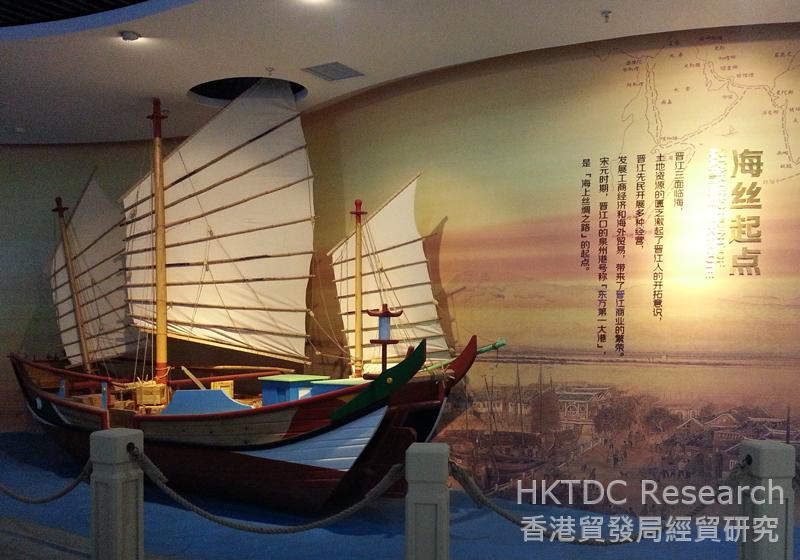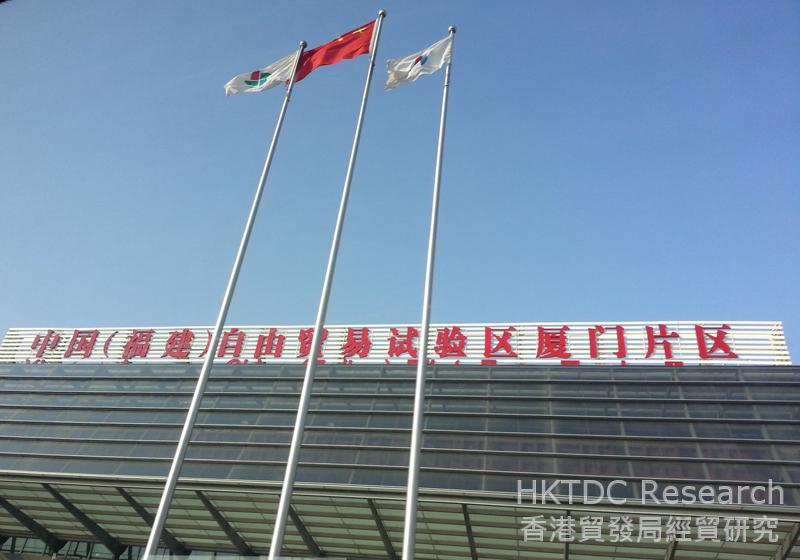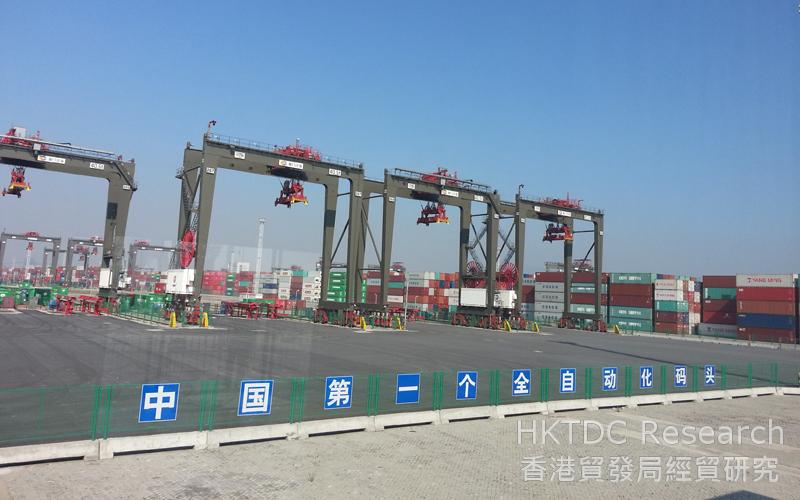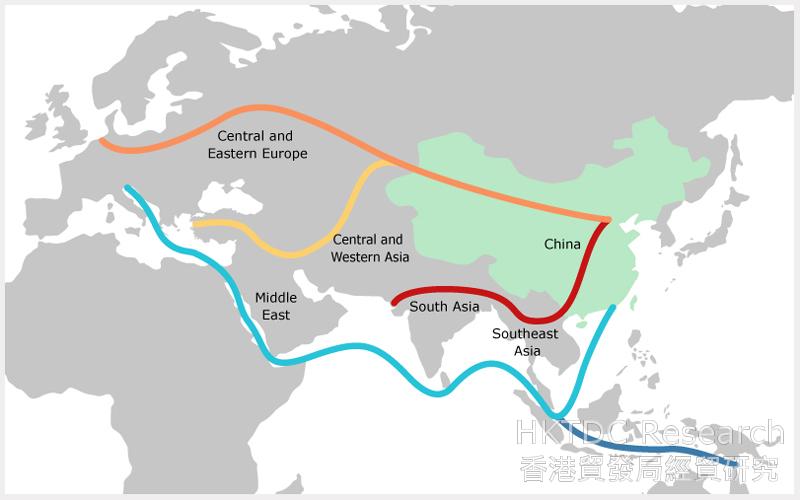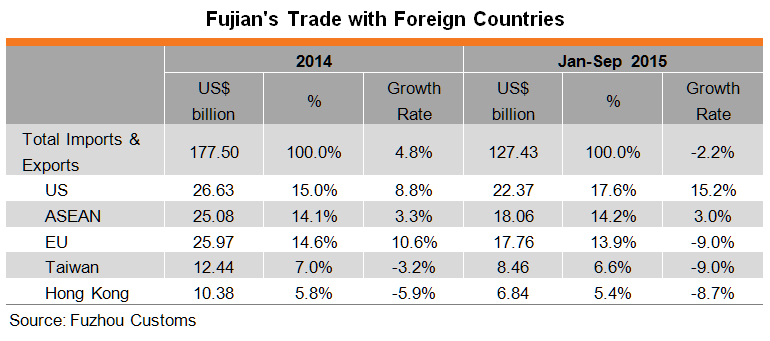Fujian to Explore 21st Century Maritime Silk Road Opportunities
Fujian to Explore 21st Century Maritime Silk Road Opportunities
China's Belt and Road Initiative specifically states that Fujian is to become the core area of the "21st Century Maritime Silk Road". One of the goals of the Fujian Free Trade Zone (FJFTZ) [1] is to expand exchanges and cooperation with countries and regions along this Maritime Silk Road route, both in depth and breadth.
In fact, Fujian was not only the main starting point of the ancient maritime Silk Road, but is an important province in China for international trade and co-operation today. The province is also home to ports forming China’s Southeast International Shipping Centre. As such, Fujian is striving to cement closer ties with the ASEAN countries, the Middle East and countries along the coast of the Indian Ocean in the hope of further expanding investment and trade in these regions.
The keen demand for relevant support services will provide ideal opportunities for companies intending to tap the Belt and Road initiative.
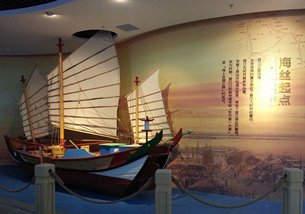
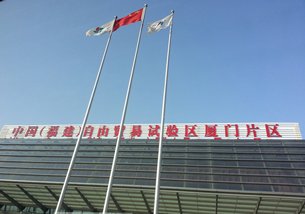
Fujian - Core Area of 21st Century Maritime Silk Road
Vision and Actions on Jointly Building the Silk Road Economic Belt and 21st Century Maritime Silk Road [2], issued by the Chinese government called for efforts to accelerate the building of the Belt and Road. It makes clear that China will support Fujian province in becoming a core area of the 21st Century Maritime Silk Road and strengthen port construction in coastal cities, such as Fuzhou, Xiamen and Quanzhou in Fujian and in other provinces. Fujian is to become the main force in the Belt and Road initiative, particularly the building of the 21st Century Maritime Silk Road, and leverage the unique role of overseas Chinese and the Hong Kong and Macau Special Administrative Regions in advancing the Belt and Road development strategy.
|
Origin of Maritime Silk Road The Maritime Silk Road can be traced back to the Han and Tang Dynasties. As people in ancient China moved over time from the Central Plains to the coastal areas and developed trade ties with foreign countries, trade via ports like Fuzhou, Quanzhou in Fujian and other coastal provinces became increasingly busy. Together with ports like Guangzhou, Jiaozhou and Yangzhou, maritime trade routes to Southeast Asia, South Asia and even the Middle East, Africa and Europe were reached. This was how the ancient maritime silk road gradually took shape.
|
In line with Vision and Actions, Fujian issued an implementation plan in November 2015 in order to develop the province as the core area of 21st Century Maritime Silk Road [3]. On the other hand, the FJFTZ made it a goal to tap the Maritime Silk Road opportunities, including the development of the Majiang sub-zone of the Fuzhou Economic and Technological Development Zone [4] inside the FTZ into an important platform for trade and for the exhibition and exchange of cultural and creative products and other commodities. The FJFTZ will explore innovative modes of cooperation and broaden cooperation with countries and regions along the Maritime Silk Road in such areas as investment, trade, shipping, infrastructure, technology, and cross-border trade settlement in Renminbi.
[For more information about the FJFTZ, see Tapping the Cross-Strait and Maritime Silk Road Opportunities of Fujian Free Trade Zone]
Fujian is an important province for China's economic cooperation with foreign countries. Its trade, investment and industries have seen sustained growth in recent years. It has a mature manufacturing sector including textile, garments and accessories (with industrial added value accounting for 10.1% of GDP in 2014), leather goods and shoe-making (9.1%), non-metal mineral products (7.6%) and computer, telecommunications and electronic equipment manufacturing (6.9%). Its service industry is also gradually maturing. In terms of industrial added value in 2014, its real estate and financial sectors had an 11.4% and 15.2% share of the province's services industry respectively [5]. A robust economy makes Fujian an important hub for promoting cooperation between China and countries along the Maritime Silk Road.
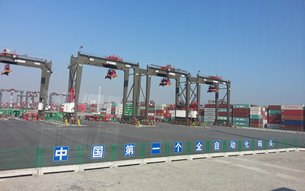
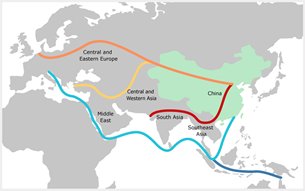
What merits attention is that while implementing the Haixi (or Western Taiwan Straits) Economic Zone development strategy and exploiting its favourable geographical location to promote cross-Straits economic development, Fujian also makes full use of its open policy and port facilities to strengthen foreign trade and investment with other regions. The port of Xiamen, home to the China Southeast International Shipping Centre, is the key port for vessels heading to Taiwan and other overseas countries. As the world's 17th largest container port, it handled 200 million tons of cargoes in 2014, with container throughput reaching 8.57 million TEUs. Cargo handling is expected to soar to 300 million tons by 2018, with container throughput reaching 12 million TEUs. Meanwhile, the port of Fuzhou has also joined the ranks of "100-million-ton class port" and become one of China's hub ports. Its Jiangyin port area with 250,000-ton class berths now ranks among the world's top 100 container ports.[6]
Fujian has frequent trade exchanges with Southeast Asia, South Asia, the Middle East and other regions. In particular, the ASEAN member states along the Maritime Silk Road have become Fujian's second largest trading partner after the US. Fujian-ASEAN bilateral trade amounted to US$18.1 billion in January-September 2015. On the other hand, ASEAN is Fujian's fourth key source of foreign direct investment (FDI) besides being the second main destination of outbound direct investment for Fujian province and Fujian enterprises.[7]
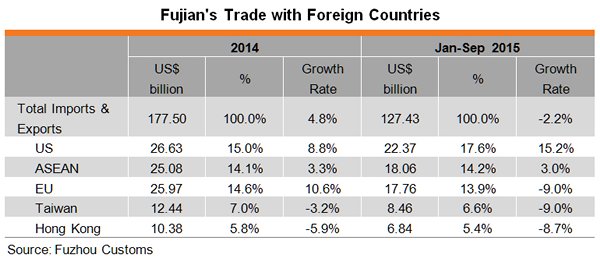
Fujian is also an important hometown of overseas Chinese. The Fujian provincial government estimates that there are currently over 12 million overseas Chinese of Fujian origin living in various parts of the world. Of this number, 80% are living in Southeast Asia. Among the 20 million-plus overseas Chinese living in the ASEAN countries, nearly 10 million came from Fujian. Fujian also has considerable social connections with countries further away. For example, about 50,000 Arabs are currently living in Quanzhou. Under the Belt and Road initiative, these trade, economic and social connections become favourable factors for the Fujian province, and hence the FJFTZ to further develop economic and trade ties with countries along the Maritime Silk Road.
Advancing Business along the Maritime Silk Road
Fujian is planning all kinds of business activities and projects under the Belt and Road development strategy. It hopes to further connect with countries along the Belt and Road and become an important pivot for economic cooperation among the Maritime Silk Road countries. While promoting bilateral trade and investment with ASEAN countries, the province is also actively opening up new markets in South Asia, West Asia, the eastern coast of Africa and other countries along the coast of the Indian Ocean and beyond. The specific measures include:
Strengthening cooperation with ASEAN countries in the construction and management of facilities such as ports, logistics parks and cargo distribution centres.
Accelerating the construction of China’s Southeast International Shipping Centre in Xiamen, including the construction of key port areas as well as the construction of an international container trunk line hub port and a regional cruise liner home port.
Making deployments for airport construction, accelerating the airport expansion projects and development of airport economic parks in Xiamen and Fuzhou, and increasing international routes serving countries in Southeast Asia, South Asia and other regions.
Promoting the construction of a cross-border optical fibre telecommunications network and cross-border e-commerce and logistics information platforms for trade with ASEAN countries, perfecting the customs clearance mechanism, and promoting information connectivity, customs clearance of goods and facilitation of people-to-people exchanges in regions along the Maritime Silk Road.
Making positive use of the investment facilitation and liberalisation measures offered by the FJFTZ to strengthen exchanges and cooperation with countries along the Maritime Silk Road.
Broadening two-way investment channels, guiding foreign investment into Fujian's leading industries, new and high-tech industries, modern services and energy-saving and environmental protection industries, supporting qualified domestic enterprises to build economic and trade cooperation areas and bases for trade logistics, production and processing of raw materials and production of traditional leading products abroad, and promoting two-way investment.
Promoting development of the China-ASEAN Marine Product Exchange.
The port of Mawei in Fuzhou is a major distribution centre for fish caught by Chinese ocean-going vessels, as well as an important port for the import and export of marine products. Over 300,000 tons of fish caught by ocean-going vessels cleared customs at Mawei each year, with annual turnover exceeding Rmb30 billion. The China-ASEAN Marine Product Exchange at Mawei has China's one and only dedicated fishing wharf with direct access to a marine products market, in addition to a robust cold-chain logistics system. Its platform for "online transaction, offline delivery and cross-border settlement" of bulk spot marine products can provide the China-ASEAN marine economy industry chain with unified standards for the orderly and traceable transactions of marine products and promote the development of the fishing industry in both China and the ASEAN.
Accelerating the construction and utilisation of the Fujian Commodity City outlets in Krasnodar (in Russia), Poland and other countries, and guiding enterprises in "going out".
- Actively take part in the UN Maritime-Continental Silk Road Cities Alliance to promote trade and investment among Silk Road cities.[8]
New Opportunities for Fujian-Hong Kong Cooperation
Fujian needs all kinds of professional services in trying to strengthen trade ties with countries along the Maritime Silk Road and promote outbound investment by enterprises in these countries. This will be a perfect chance for Hong Kong companies intending to tap opportunities arising from the Belt and Road initiative. In fact, Hong Kong is not just Fujian's major trading partner but is also its largest source of FDI, as well as a key destination for its outward FDI.
The flow of foreign investment from Hong Kong to Fujian amounted to US$4.52 billion in 2014, accounting for 63.5% of utilised FDI in the province. Investment mainly went to the manufacturing, wholesaling and retailing, and real estate sectors in cities like Xiamen, Quanzhou and Fuzhou. In the same year, Fujian's direct investment in Hong Kong reached US$1.23 billion, accounting for 44.4% of the outbound direct investment from the province.[9] Besides investing in the Hong Kong market, most of these funds are using Hong Kong as a springboard to invest in other regions overseas.
During a business promotion highlighting Fujian-Hong Kong cooperation held in Hong Kong in June 2015, the Fujian provincial government indicated its hope to make greater use of Hong Kong's advantages in developing the FJFTZ and promoting the building of Fujian as a core area of the 21st Century Maritime Silk Road.[10] In fact, Hong Kong is not just a regional commercial and trading centre but can provide extensive professional services in such areas as finance, logistics and law to enterprises in Fujian and in countries along the Maritime Silk Road and beyond with its leading edge in the services industry. Also, as the first port of call for professional services for mainland enterprises, Hong Kong can effectively promote their "going out" efforts and help them make the best of opportunities arising from the Belt and Road initiative. Fujian enterprises resolving to step up their development of trade and investment with countries along the Maritime Silk Road provide a perfect chance for Hong Kong companies intending to tap opportunities arising from Belt and Road initiative.
[Note: For more details concerning Hong Kong's support for mainland enterprises in their outbound investment, see Outbound Investment of Chinese Enterprises: Hong Kong the First Port of Call for Professional Services.]
[1] The Fujian FTZ in this report refers to the China (Fujian) Pilot Free Trade Zone.
[2] This document was jointly issued by the National Development and Reform Commission, Ministry of Foreign Affairs and Ministry of Commerce in March 2015.
[3] For details, please see HKTDC’s Business-Alert China article: “Fujian Announces Core Area Construction Plan for 21st Century Maritime Silk Road” (25 November 2015)
[4] The Majiang sub-zone is part of the Fuzhou Sub-zone of the Fujian FTZ and includes the 0.6 km2 Fuzhou Free Trade Zone.
[5] Source: Fujian Statistical Yearbook 2015
[6] Source: Xiamen Port Authority and Fuzhou City Bureau of Commerce
[7] Source: Fujian Provincial People's Government
[8] The UN Maritime-Continental Silk Road Cities Alliance is a joint initiative by the UN Office for South-South Cooperation (UNOSSC), UN Development Programme (UNDP), UN Industrial Development Organisation (UNIDO), UN Educational, Scientific and Cultural Organisation (UNESCO), UN World Tourism Organisation (UNWTO) and China International Center for Economic and Technical Exchanges. It aims to facilitate the coordination of policies, building of partnerships, formulation of initiatives and access to finance, leading to intensified trade, investment and exchange among participating cities.
[9] Source: Fujian Statistical Yearbook 2015; Hong Kong and Macau Section of the Department of Commerce of Fujian Province
[10] For more information on the "Presentation on Fujian-Hong Kong Cooperation", see article in Chinese published on the website of the Department of Commerce of Fujian Province on 5 June 2015: .
| Content provided by |

|
